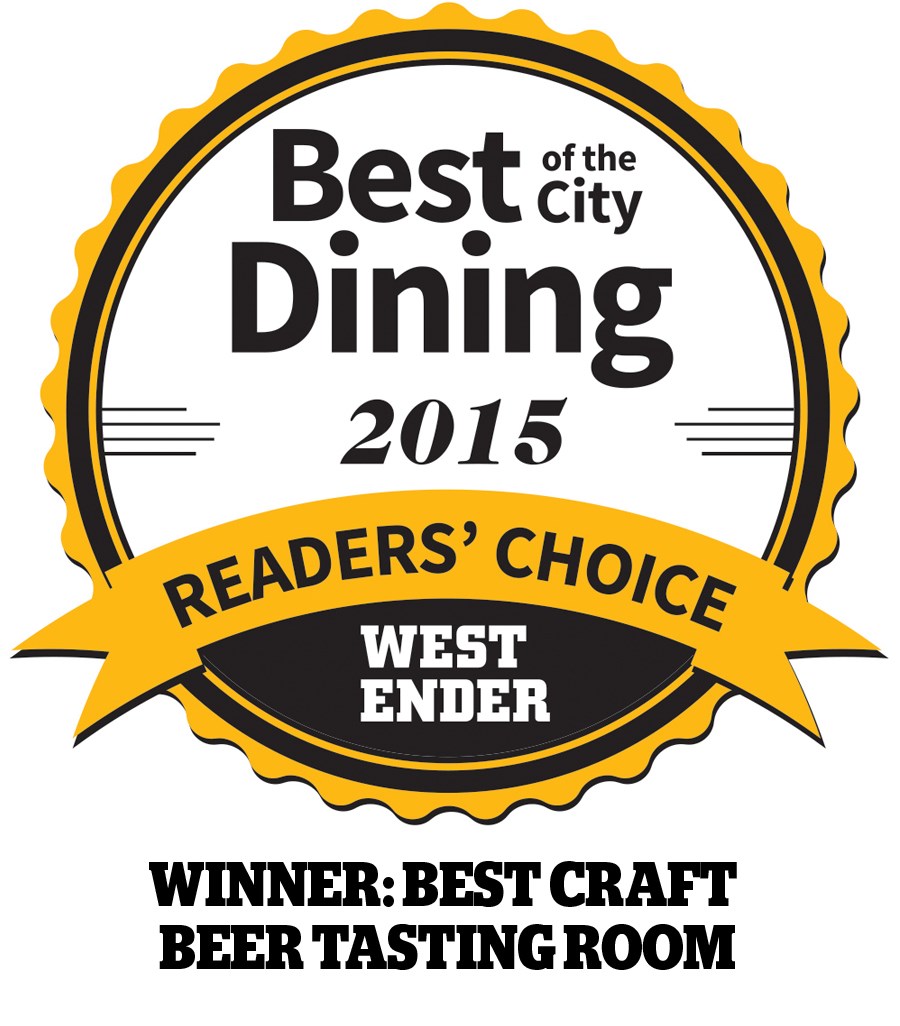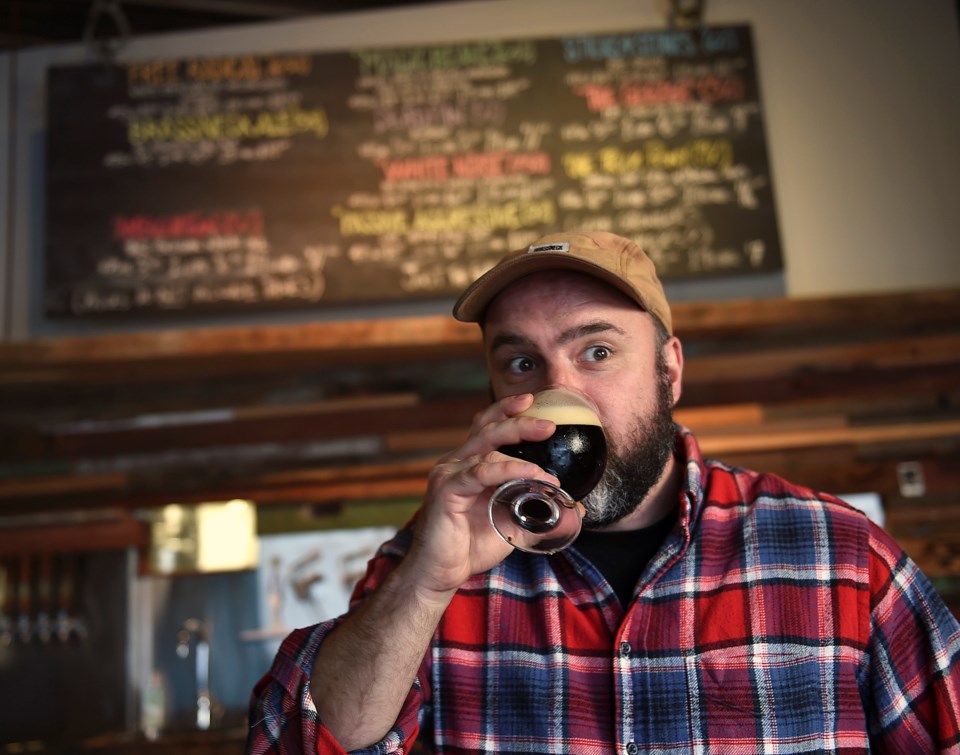
It’s official: Brassneck Brewery is the best. The popular Main Street brewery won top honours at the BC Beer Awardslast month, taking home the Best in Show prize for their One Trick Pony Imperial IPA. Combine that with tying with 33 Acres for Vancouver’s favourite tasting room in the Westender’s Best of the City: Dining readers’ choice poll, and you have a mighty compelling case.
Not that Nigel Springthorpe would ever admit it. The Brassneck – and Alibi Room – co-owner has earned his status as a local legend for both his exceptional taste in beer and his unwillingness to accept his legendary status. This would be infuriating if weren’t such a decent, genuine guy. Ugh.
I sat down with Nigel to discuss the recent wins, the brewery and his influence on the local beer culture, two years after Brassneck first opened its doors.
How do you account for the popularity of Brassneck? The way that I’ve seen it, it’s like the craft beer thing was kind of happening, and then Parallel 49 opened in 2012, which let Vancouver’s industry lift off a little bit. But I don’t think Brassneck or 33 Acres get due credit for backing that up. It’s almost like the three breweries elevated the industry together.
I actually don’t know how much one thing has to do with the other thing. There’s definitely some overlap. When you talk to the St. Augustine’s dudes [who later opened Parallel 49], they always wanted a big brewery and, y’know, get everybody. They took a big gamble with a homebrewer who ended up being excellent. They’ve got this really good combination of drive and quality, and those guys are driven to be big. They’re doing a really good job of it. I think the beer, as they’ve grown, has gotten better. Some people think that when things get bigger they get worse, but the quality control’s there.
I mean, Brassneck took three years of planning to make. We wish we had been opened the year before, but it just didn’t happen. 33 Acres is a brewery that I didn’t know anything about – nobody knew anything about it – and they’ve really carved their own niche in a very busy market place by being absolutely, completely, totally and utterly different. If you could put Parallel 49 and 33 Acres on a spectrum of breweries, they’d be on opposite ends in so many ways.
That’s what I’m getting at. You three don’t have much to do with each other, and aren’t all that similar, but because you all opened within a year of each other, you’ve educated the local consumer base about what craft beer is. As result of that, these three breweries have allowed the industry to take off without intending to, based purely on what your points of view are. Together you’re representative of what craft beer can be.
Yeah. I think Brassneck is much more about the experience of the tasting room and seeing what else is available beer-wise. I think 33 Acres focuses on the overall experience, and Parallel 49 is all about the brand. Their tasting room is scruffy. Anything goes, in a longshoreman kinda way. Those are the dudes that are hanging out there during the day. I’m sure 33 Acres and Brassneck look a little precious compared to those guys, you know?
But we have to be more about what happens when you walk through the door. I don’t know if one would’ve survived without the other one or anything. There was a new wave of stuff that happened at that time in 2012, 2013, but the breweries that started popping up at that time – Bomber, Main Street, even Strange Fellows – they were planning those for a long time.
Right. I know it all happened by accident, but it just got so popular, and it’s not simply because breweries were popping up. I’m just trying to wrap my head around how this happened. Everything was just happening at the right time. The consumer base was ready for it and getting educated about it, because of the popularity of these three breweries.
You had these companies that had the beer scene by the short and curlies for a long time. Mark James Group had a few brewpubs. Steamworks. Central City. So you’ve got brewers, working a long time for those guys, who are now getting older. Iain Hill’s in his 40s, Conrad’s in his 40s, Vern Lambourne, who’s now going out on his own. It’s this perfect storm of guys who were working for other people, gathering their own wealth, they’re getting older and looking at what they’re going to be doing.
That might have had something to do with it – an older generation of brewers wanting to go out on their own. But then that doesn’t explain how you get Powell Street and Dave [Bowkett], who came out of nowhere – absolutely nowhere. They were really successful. The Doans are young guys.
The other thing is you have me, Nigel Pike, Don Farrion and the guys at St. Augustine’s – we were all guys that had beer-focused restaurants, and we were seeing this thing happening, and it felt like the next logical step to be actually manufacturing. That was what we felt.
What do you think’s going to happen in the next five, ten years?
That’s really hard to say. I think it’s going to get harder for bigger production places. They’re going to have to look for new markets, whether that’s in BC or not. There has to be saturation, even now. When you go to a liquor store and you pick up a couple of bombers off the shelf, it feels expensive at the moment. It feels daunting because there’s so much product and it feels expensive. Now that’s a combination of the price changes and just the fact that it’s more expensive, especially with American imports.
So I think people are going to have to look outside of BC maybe. Or is [craft] just going to continue chipping away at the bigger brands? That’s already happened with draft accounts these days. Draft accounts are a total battleground, and that’s the lowest margin product. It might get a bit nasty on that.
For us, we’re small – so small that things that affect us are new developments happening across the street. We’re always going to have a beer bar on Main Street, and that’s valuable in itself, for sustainability at our level and our size. I think what you might see is more of this thing, sort of more neighbourhood-size breweries, where they don’t need to play that packaging game, which is where things are going to get really competitive.
The price changes have been good for us. People are coming in and getting their two litres. A two-litre growler is almost [the same as] three bombers. Our Brassneck Ale is $10. Compare that to walking into a cold beer and wine store and picking up a bottle. The other thing is, you can taste it before you buy it. It’s a nicer experience.
So when I see all these things happening, and the way things are growing, our aspirations are not to play that game.


